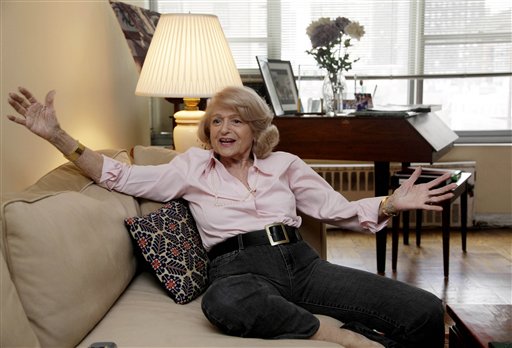

An Occupy Wall Street protester sweeps up near a large military-style tent at Zuccotti Park in New York, Monday, Nov. 7, 2011. (AP Photo/Seth Wenig)
It has been a key question as the protests on Wall Street’s footstep approach their two-month anniversary: Can the encampment survive the icy, punishing conditions of a New York City winter?
On Monday, the Occupy Wall Street protesters gave their answer, erecting what they described as military-grade tents designed to withstand extreme weather and stave off hypothermia. Twenty-seven of the tents — half measuring 16-by-16 feet and half measuring 11-by-11 feet — are expected to be up within the next 10 days or so, said protester Jeffrey Brewer, who is helping coordinate the deployment.
The structures are costing the protesters a total of about $25,000, he said, paid for through some of the hundreds of thousands of dollars in donations the group has received.
By late morning, three of the tents — each as big as a tiny cottage — had been erected. Another four were expected to be up shortly, and an additional 20 were being ordered, Brewer said. One of the first tents to be raised was for the site’s volunteer medics and their patients, while another was designated a safe space for women, some of whom grew concerned after sexual attacks were reported at the camp.
Protesters can keep off the cold ground by sleeping on cots, which have been available at the site for at least two weeks, Brewer said.
It remains to be seen whether the arrival of the tents will disrupt the balance of power at the site, a privately owned plaza called Zuccotti Park.
Tents are technically not allowed, but the company that owns the land has declined to enforce that rule for weeks, and dozens of small camping tents have proliferated. Mayor Michael Bloomberg has said that police will move in only in the case of unsafe conditions or if the owner, Brookfield Office Properties, declares that the protesters are trespassing. A call to the company for comment was not immediately returned.
On Monday, the mayor said that the Buildings Department believed the protesters hadn’t violated the city’s building code, but he expressed dismay at their attempts to bolster their encampment.
“This is not a place to build homes,” he said. “This is a park that has to be open to people.”
But Bloomberg seemed to indicate little had changed. “They’re not complying with Brookfield’s regulations, but Brookfield has not asked us yet to help them enforce those regulations, and so that’s that,” he said.
Asked whether the protesters were concerned that the larger tents could prompt action by Brookfield, Brewer voiced no worries.
“Our point of view is we’re participating in a civil disobedience,” he said.
On Monday, about 1,000 black and Latino community members were marching 11 miles down the length of Manhattan to show support for the protesters. Also joining the march were public officials, including city Public Advocate Bill de Blasio and Comptroller John Liu.
“I’m a 99 percenter, living from paycheck to paycheck,” said one marcher, 54-year-old Carmen Acosta, a resident of Manhattan’s Washington Heights neighborhood. “The world is Zuccotti Park.”
Maxine Dade, who at 16 is one of the protesters staffing the medical tent at the park, said that the addition of the sturdier tents is a necessity. On one recent night, she saw dozens of people come in with the symptoms of hypothermia, some of them shaking uncontrollably and practically exuding an icy cold, she said.
“Sometimes, you can just feel it coming off of them,” she said.
Dade, who is at the camp with a parental consent form, said that she didn’t believe the park owner would come after the protesters now.
“They can’t object to our putting up tidier, better constructed tents,” she said. “They can’t really want us to freeze to death.”
___
Associated Press writer Verena Dobnik contributed to this report.
___
Samantha Gross can be reached at www.twitter.com/samanthagross .
Copyright 2011 The Associated Press.






